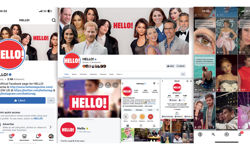
There’s a wild story going round the publishing business. The story is that digital magazines are dead: crushed underfoot in the headlong rush into web-based content; left behind as video and audio (with the surprise revival of the humble podcast) take centre stage ahead of text-based products; washed away in the tsunami created by the smartphone and, now, the voice-activated-assistant. Yet the truth is that publishers and consumers seem to have very different views about digital magazines.
The publisher perspective: reducing focus on digital magazines
Wessenden Marketing’s latest Publishing Futures survey, due for release in early September, lists 24 different digital activities that consumer media companies are currently engaged in and ranks them in terms of the amount of investment (money and/or time) that publishers are putting into each area. Digital magazines (issue-based editions) have slipped down to number 20, whereas mobile-optimised websites emerge as the top content platform. There are three important points that lie behind this ranking…
• The financial payback on digital magazines is well above the average for digital platforms, light years ahead of content on social media platforms, which many publishers seem to be pursuing without any idea of how to monetise that whole area.
• Publishers appear divided. On one hand are those who have dismissed digital magazines as a dying platform; on the other hand, many see them as an important, but stable channel: something that they can push into the background to hum along nicely, as they grapple with the more challenging and funky platforms like video and social.
• The humble PDF Replica remains the core digital magazine format. It is still used by 63% of consumer magazine brands, as opposed to Enhanced PDFs (20%) and Interactive Rebuilds/Apps (17%). Publishers are predicting that the PDF Replica will drop in importance over the next two years. Yet the focus is not shifting into fully interactive magazines, which look impressive, but are expensive. Instead, the real publisher investment is going into Enhanced PDFs, where the PDF is enriched with embedded audio and video, web links, mobile optimisation, etc. It is the Enhanced PDF which Readly has also committed to as the practical, cost-effective and user-friendly solution to digital reading.
The consumer perspective: growing usage of digital magazines
The National Readership Survey shows some clear, long-term trends. As the penetration of print declines, the usage of web content is growing strongly, especially mobile-accessed web. Yet digital magazines are also growing their audience once more after plateauing in 2014/15. In 2016, 53% of UK adults read a print magazine (down by 14% points since 2012) while 19% read a digital magazine (up by 12% points). As the print audience goes grey (the median age of a print magazine reader has gone up by 3 years since 2012 to the current 49 years old), the younger digital magazine reader has remained stable at 34.
The clear conclusion is that digital magazines are growing their audience footprint once more after stuttering for a couple of years. Also, they are delivering attractive, younger readers for publishers wanting to drive growth among Millennials.
Digital newsstands helping to drive growth
Publishers are now generally doing smarter things with their digital magazines, in terms of both the content itself and the marketing, offering print + digital bundles and multi-layered digital services. Yet digital magazines remain relatively low profile within most publishing organisations and it has been left to the major digital newsstands to grow the channel.
Readly’s own experience shows that digital magazines are also opening up new reading opportunities. Print magazines were always founded on home-based, me-time reading occasions. This remains the core for digital magazine reading too. A recent analysis of the 108,000 consumers who have downloaded the Readly app over the last twelve months (up by +192% year on year) shows some interesting trends…
• The 6pm to 9pm, home-based, tablet-accessed read is still the most popular reading occasion, although usage does spread out more evenly over the weekend.
• Out-of-home, smartphone-accessed usage is growing fast – shorter, “snacking” opportunities while on the move, filling in time in a busy schedule or increasingly in active search mode, looking across the magazine inventory for information on specific topics. The average reading occasion is 22 minutes, but that average ranges from longer, more leisurely reads through to quick snacks – something that digital magazines are very suited to delivering.
• Digital reading is very frequent. 40% of Readly users access the app every day with the average being 4.5 reading sessions per week.
• Archive is an important digital activity, both in term of drilling into back issues (this accounts for 18% of the issues read on Readly) as well as cutting and archiving specific articles. This also leads into sharing articles with others - an important way of spreading a magazine’s brand reach and profile.
• Discovery is also important, as consumers can try out new magazines in a low commitment environment.
In summary, digital magazines were almost crushed in the early years by the industry’s unrealistic expectations. They were heralded as the digital answer to print’s decline, but they could simply never match that hype. In disappointment, a number of publishers deprioritised them or dropped them completely: the Publishing Futures survey shows that 20% of consumer publishers do not currently have any digital magazines that they are actively marketing. Yet it is the ongoing activity of a number of digital newsstands which is bringing digital magazines back into the publishing mainstream as a powerful, predictable and monetisable platform. And that is a fact, not a wild story.
Readly is a digital service which lets customers have unlimited, “all-you-can-read” access to hundreds of national and international magazines in one app for £7.99 per month – both streamed and downloaded. Readly UK started operating in the spring of 2014 and now deals with 98 UK publishers, promoting 713 UK magazine brands.
Ranj Begley, Managing Director
Readly UK
3rd Floor
111 Buckingham Palace Road
London
SW1W 0SR
Website: gb.readly.com
Email: ranj.begley@readly.com










